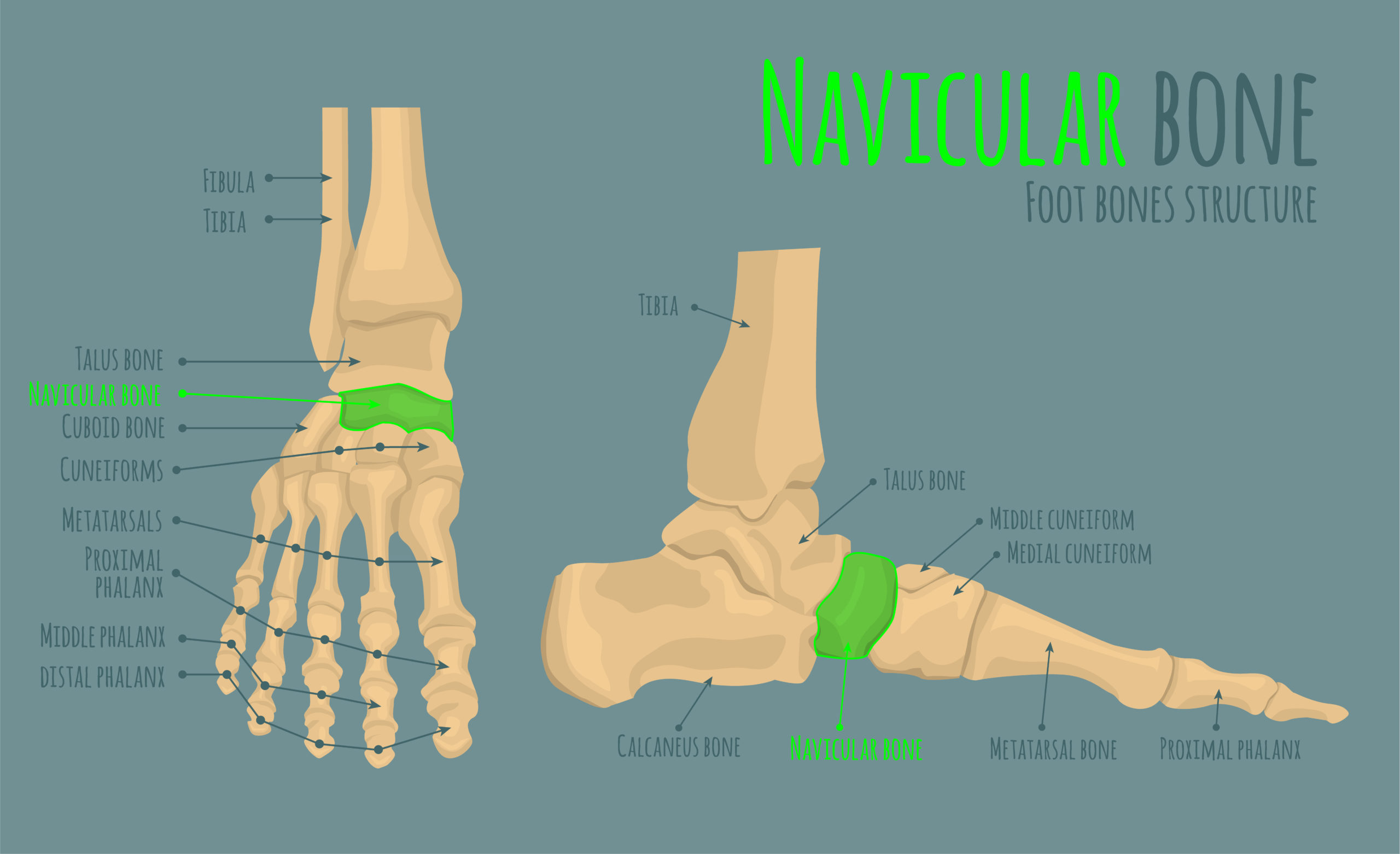The navicular is a boat-shaped bone on the inner side of your foot which is a site of attachment of the tibialis posterior muscle. An accessory navicular is an extra bony growth just adjacent to the navicular.
The accessory navicular could be completely fused to the true navicular making it look like a large bone or it may appear separated by a layer of cartilage or fibrous tissue.
This small bone can become quite symptomatic and cause pain. Very often, accessory navicular bones are present on both sides.
In this article, we will discuss physiotherapy following the surgical removal of an accessory navicular.
The physiotherapy protocol following the accessory navicular excision is broken down into these three main phases;
- The time for the surgical site to heal
- Strengthening of the tibialis posterior muscle
- Wearing a medial arch support.
Even though these phases are divided into 3, they will overlap, for example, the surgical site will continue to heal till the end of the year but that shouldn’t stop strengthening exercises.
The full recovery time following removal of the accessory navicular varies between 6 months to 1 year based on the individual.
Phases of recovery following accessory navicular excision
0 to 2 weeks after surgery
The first 2 weeks after surgery are for wound healing and to relieve the foot of any swelling. You are not allowed to walk on that leg during this time.
Your foot will be in a cast during this time. The role of the cast is to provide comfort and to keep your foot in an acceptable position.
In order to provide early support to the foot, your doctor may mold the inner part of the cast to support the arch.
2 to 4 weeks after surgery
You are allowed to bear weight on your foot though it may continue to be sore for a few more weeks and this could dampen your drive towards weight-bearing.
Partial weight-bearing may begin at about 2 weeks and then gradually progress to full weight-bearing. Your doctor will give you a cast shoe to wear on your casted leg. This is an easy slip-on shoe.
You will continue to have the cast on for probably an extra 2 weeks,
4 weeks and Beyond
The cast will be taken off and you will go back to wearing your normal shoes.
You will need a shoe insert to continue supporting your medial arch. This can be purchased over the counter.
The tibialis posterior muscle is one of the main muscular supporters of the medial arch. The tendon of this muscle is directly attached to the navicular. Due to its attachment to the accessory navicular, the strength and functioning of the tibialis posterior muscle can be affected by accessory navicular excision.
Therefore, it’s important to do exercises to get this muscle to continue firing and strengthen it more for the best integrity of the foot.
- Tibialis posterior strengthening exercises
You’ll need to do this standing up. Turn your toes inwards as if pigeon-toed feet slowly get onto your tippy toes and slowly back down.
Do about 20 each time. Remember to do these daily. Try to couple them with an activity you do daily like brushing your teeth so that you don’t forget.
If you’re a little unsteady on your feet then do it while supporting yourself either on a rail or a wall.
Return to activity after accessory navicular surgery
You may return to contact sports or high-impact dance after 6months.
In conclusion, following accessory navicular excision surgery, the first few weeks will focus on the healing of the surgical site, and then you will progress on to exercises for strengthening your tibialis posterior muscle.
Together with these exercises, you will need to wear an arch support in order to protect your medial arch.
